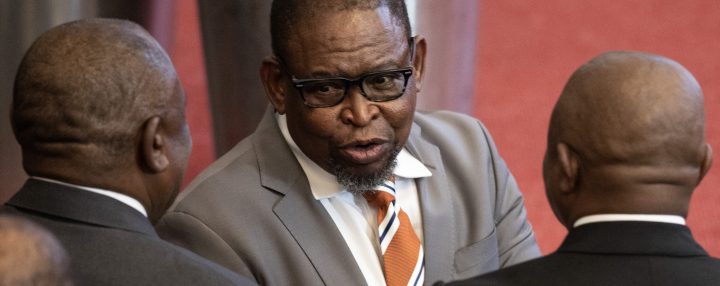AFTER THE BELL
How to mini-budget like a boss

What would happen if governments approached their finances as if they were corporations, and corporations published their specific spending and income projections for the year? I think it might help both to consider this speculative possibility.
I’ve always wondered about the differences between government finances and company finances. The most obvious is that the tradition of governments all over the world is to present their budgets — what they plan to spend over the next year — as the main financial presentation of the year. Companies seldom do that publicly: they report on the outcome. Hence, government finances tend to be prospective, and corporate finances retrospective.
This very essential difference is obviously a consequence of their respective audiences: investors want to know how the company performed; voters want to know what the government is offering. Part of the difference lies in the fact that for investors, the most important things are the value of their investment and the likelihood of dividends or share buybacks.
With governments, the one thing voters very seldom get is a tax refund. Once you hand your boodle over to the government, then it’s, generally speaking, goodbye. The government might promise to take less next year, but as for this year’s rake, you can forget it. And the reason is mostly that governments around the world spend more than they bring in. And this is true even in the good years.
There are other differences too, of course. Government finances are, generally speaking, much bigger. And with that size difference come advantages and disadvantages. The disadvantages are that as finance minister you are steering a huge tanker. Turning is a hard and long-term project. The advantage of titanic size is that there is a kind of “much of a muchness” about government budgets. A little more here, and a little less there. It all kinda blurs.
Government finances are also pretty rigid. If you have told the public you are going to spend R50-billion on education in a fiscal year, you can’t just spend half of that. But I bet some corporates change course massively, financially speaking, at various points during the year. After all, management teams are paid to do so if the outlook or circumstances change.
I wonder sometimes what would happen if governments approached their finances as if they were corporations, and corporations published their specific spending and income projections for the year. I think it might help both to consider this speculative possibility. Some companies do provide market guidance, but most keep it close to their chests because it’s embarrassing when you miss your targets and active shareholders are lurking to make a fuss.
Governments have long ago gotten used to that little problem. Oddly for me, it’s much easier to understand the strategy of a company by seeing what actually happened the previous year compared with understanding government strategy by seeing what they hope will happen in the future. It’s just much more concrete, grounded as it is in reality.
All this brings me to Wednesday’s mini budget or, as it’s more formally known, the Medium-Term Budget Policy Statement. In a way, the mini budget is an interesting beast because it happens halfway between when the Budget was produced and when the final spending history is known.
I always find the way the National Treasury expresses itself very refreshing: there is an honesty and grittiness about the department that is evidenced in no other department. But that doesn’t mean the Treasury has been free of mistakes.
Over the Zuma years, its biggest mistake was to constantly overestimate economic growth. Even when those estimates were brought down, they were still missed on the downside. The Treasury just didn’t recognise how business confidence was eroding.
Visit Daily Maverick’s home page for more news, analysis and investigations
But today, we live in much more straitened times. The Treasury is now budgeting for GDP growth of just 2% over the next few years. Gone are the days when SA considered its default growth capacity to be on average 3.5% through the economic cycle. That in itself is a huge concession, and a depressing one. The Treasury now knows that SA’s economic problems are structural. Without structural reforms, no 3.5% default.
The result on Wednesday was some extremely hard decisions; the biggest of those was the announcement that the Treasury intends to keep the public sector wage bill in check. The government has now pencilled in a 3% increase, even though the talks are by no means resolved.
That, and a really remarkable rebound in tax receipts, meant that compared with the Budget at the start of the year, Finance Minister Enoch Godongwana had about R30-billion extra. So, what did he do with that?
Well, first, he took some problems off the table. The government is allocating R30-billion to Denel, the South African National Roads Agency Limited (Sanral), and Transnet in the current year. The big winner is Sanral, which gets its debt more or less written off. Godongwana is doing this because he assumes these are once-off costs, and that is what you do with windfalls. Of course, we the long-suffering public know better; giving a government-owned corporation a handout means that is now their new budget.
But the larger point is that with these results now in, looking to the future, things appear a lot better all of a sudden. The government deficit drops from -6%, estimated in February this year, to -4.9%. The debt-to-GDP ratio stabilises much lower, perhaps 20% less than anticipated in 2020.
With the big picture better under control, the government can start thinking strategically, as opposed to paddling desperately to find a hunk of cash to fill a black hole. And here the decision is the correct one: boost infrastructure spending as a way to lead the economy forwards. There are plenty of potential opportunities for this plan to go wrong: for one, public sector employees could go completely berserk and, to be honest, I wouldn’t totally blame them. A 3% wage increase is a 5% decrease in real terms, but public servants have been very well treated over the past decade, and SA does spend much more than its peers on its public service, and gets much poorer quality outcomes.
But generally, I can’t really fault the broad strategic direction that the Treasury is taking. The only thing I would suggest would be to think even more strategically, as you would in a business and you had to present your outcomes, not your plans. DM/BM

















 Become an Insider
Become an Insider
Comments - Please login in order to comment.